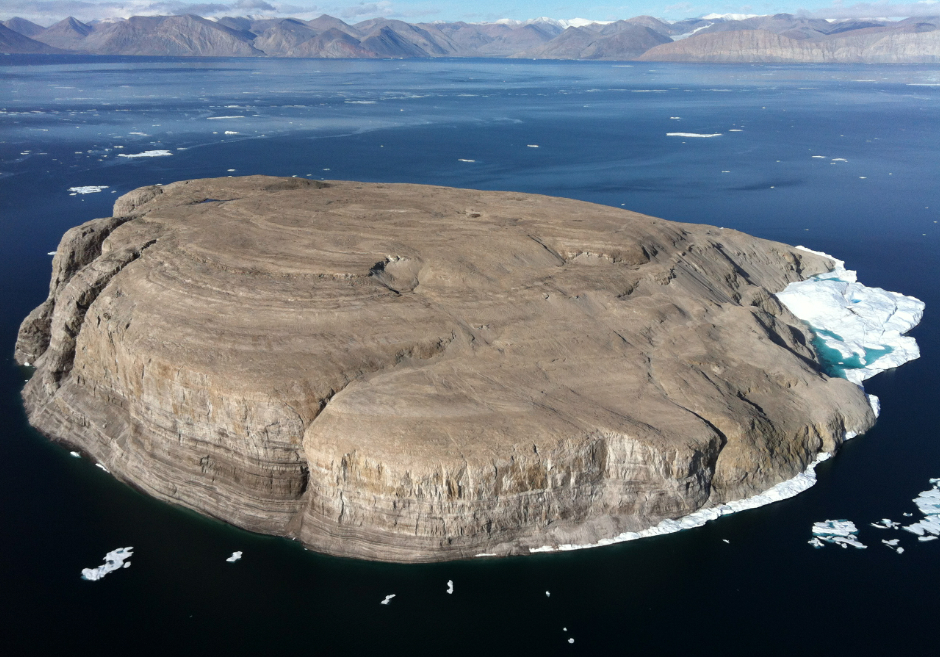Denmark, Canada agree to settle Hans Island dispute
Copenhagen and Ottawa will try again to close the 5,000-foot gap in the border between Greenland and Nunavut.

A long-standing dispute over what is essentially a large rock between Nunavut and Greenland may soon find its end after representatives from Denmark and Canada announced on Wednesday that they would begin looking into ways to resolve their outstanding border issues in the Arctic.
The status of Tartupaluk Island (known as Hans Island in English and Hans Ø in Danish) has been unresolved since 1973, when Danish and Greenlandic officials drew up the 1,670-mile (2,685-kilometer) maritime border Greenland and Umingmak Nuna (Ellesmere Island).
While determining the location of most of the border was a simple matter of identifying a center line, agreeing to the status of Tartupaluk has proved more difficult, given its position in middle of the Kennedy Channel, part of a system of waterways linking Baffin Bay to the Arctic Ocean.
That has led both countries to steadfastly lay claim to the 320-acre (1.3-square kilometer) bean-shaped island.
Although most exchanges over Tartupaluk are in keeping with the friendly relations between Canada and Denmark — including occasional tit-for-tat visits beginning in the 1980s that are most memorable for involving cabinet members from both countries leaving bottles of alcohol for each other — when it comes to seeking a solution to the dispute, there has been little room for compromise.
The announcement of the renewed efforts to resolve the status of Tartupaluk, which was likely first used by the Inuit as hunting grounds and as a landmark when navigating, comes after the two countries agreed in 2005 to base a resolution on the island’s status on geological surveys and, if necessary, by asking the International Court of Justice to resolve the claims.
It also comes after Danish and Canadian academics, in 2016, called for the island to be shared equally between the two countries, with the border drawn down the middle, connecting the borders that exist on either end.
In addition to the status of Tartupaluk, the Danish-Canadian task-force on boundary issues established on Wednesday will seek to resolve a disagreement over the maritime border between the two countries in the Lincoln Sea, as well as overlapping their overlapping continental-shelf claims in the Labrador Sea.